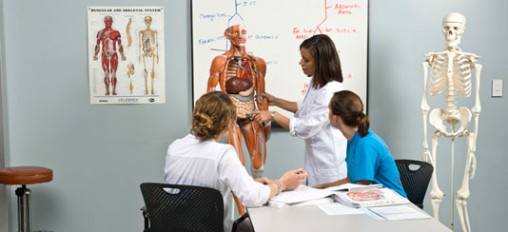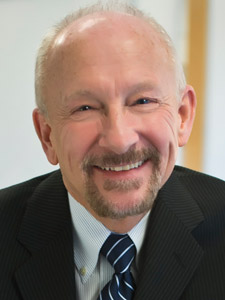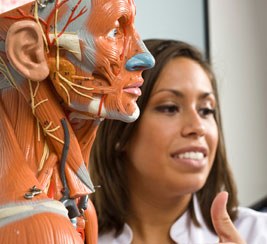
Larry Ream said Wright State’s Master of Human Anatomy Instruction program is unlike any other in the country because of the pedagogy students receive in their second year.
The pending implementation of the controversial healthcare reform law may have shut down the federal government, but it stirred Larry Ream to action.
In anticipation of increasing demand for professionals who can teach anatomy in higher education, Ream created the Master of Human Anatomy Instruction program three years ago.
“However healthcare reform turns out, it seems likely that a bunch of uninsured people are going to be getting primary care for the first time,” said Ream, Ph.D., anatomy, physiology and neuroscience graduate programs director. “That means the need for physicians assistants and nurse practitioners will rise, and in turn the demand for people who teach anatomy to these kinds of students will rise.”
Anticipating the trend, Ream sought to create a program that didn’t just teach anatomy, as so many other programs do across the country, but one that also teaches students how to teach. He reached out to the College of Education and Human Services and found an enthusiastic partner. By 2012 the program had its first graduate.
The result is a program that’s still in its infancy, but one that’s meeting a need with a unique approach.
“As far as I know and as far as we’ve been able to find, this is really the only program like it in the country, certainly in Ohio,” said Ream.
There are 35 Master of Anatomy programs in the country and just three in Ohio (Ohio State, Case Western Reserve and Wright State).
It’s unique because of the pedagogy students obtain in their second year. In their first year of study, students learn about anatomy just as their med school counterparts do from identical curriculum. But in the second year, students begin studying how to conduct a class.
Field experience—what was formally known as student teaching—is a big part of the instruction. Students must join off-campus anatomy classrooms and conduct review sessions, give lectures and most importantly, receive feedback from experienced anatomy professors.
“Most college professors have no classroom training, they are hired because they are an expert in their field. Some of them are good lecturers and some of them are not so good,” said Ream. “We’re trying to change that.”
So far the results have been encouraging. Each of the first three graduates were employed quickly in their field and Ream expects healthcare reform to make it even easier.
“The number of schools that are producing anatomy and physiology degrees is going down, which is a funny thing because there is a steady need for people to teach anatomy in med schools and a growing need in allied health schools that educate physicians assistants, nurse practitioners and physical therapists,” said Ream.
“I think in the next 5-6 years the physicians assistant programs are going to pop up in mass too just like nursing programs—the Allied Health schools—did all over Southwest Ohio over the last ten years.”
Whether that prediction comes true or not, Wright State students will be more ready for the challenges of teaching anatomy because of a fledgling program that’s just beginning to gain steam.



 Milling around
Milling around  Wright State recognizes Nursing Professor Kim Ringo for advancing international student success
Wright State recognizes Nursing Professor Kim Ringo for advancing international student success  Wright State honors graduating students for distinguished doctoral dissertations
Wright State honors graduating students for distinguished doctoral dissertations  Top 10 Newsroom videos of 2025
Top 10 Newsroom videos of 2025  Museum-quality replica of historic Hawthorn Hill donated to Wright State
Museum-quality replica of historic Hawthorn Hill donated to Wright State 